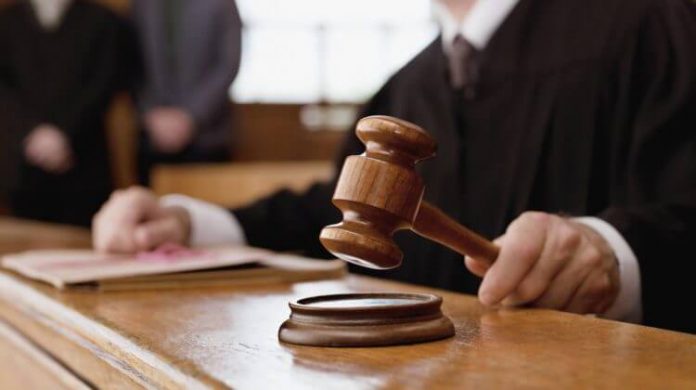This article is written by Shikha Pokhriyal, from Delhi Metropolitan Education, GGSIPU. This article deals with one of the severe punishments that exist in the world: the death penalty in light of the case of Manhoran v. State of Tamil Nadu.
Table of Contents
Introduction
Punishments are given to maintain law and order in society. The intention behind imposing punishment is to prevent crimes from happening again. Punishments help to create fear in the minds of people who are thinking of committing a crime. Several theories of punishments have been applied from time to time to attain the desired objective. If a person is found guilty of an offence then the sentence of punishment should be appropriate. This means that it should not be too harsh nor too lenient. The punishment declared for a specific crime is always according to the gravity of the offence. The punishment depends upon the nature of the crime, the intensity, and the manner it was committed, and also what is the thought process of the accused.
The crimes like theft, robbery, defamation, fraud will result in less severe punishments like imprisonment for few years, or fines but the crimes like violence against women, rape, murder are considered serious crimes so the punishments provided for these offences are always serious like imprisonment for a lifetime or death.
The death penalty was given in several ways. For instance, burning, torture, beheading, slow strangulation, etc. With the emergence of the legal system and the growth of human rights, death penalties like beheading or torture were reduced and the number of offences punishable by death was also reduced to severe crimes.
Death sentence
The death penalty, also known as capital punishment is the process of law, where a person accused of a severe crime is put to death by a court of law. When the court passes a judicial degree to punish someone in this way it is known as a death sentence. The court passes a death sentence for very serious crimes known as capital offences or capital crimes. In Ancient Greece, the death sentence was given to the offenders who committed crimes like, murder, treason, rape, and arson. Plato argued that the death sentence should be given for those crimes that cannot be amended. To prevent giving death sentences to less severe crimes, the legal maxim of Lex talionis was applied which means an eye for an eye, a tooth for a tooth, and a life for a life.
In China, the punishment of the death penalty to criminals was given by several painful methods like sawing the condemned in half, boiling, and flaying him while still alive. In Europe, the punishment was carried out by boiling in oil, burning at stake, hanging, drowning, etc. Other painful methods that were carried out to punish were electrocution, gassing, and the firing squad. Earlier when the death sentence was given to an offender, he was punished in front of the huge crowds to set an example that if anyone tries to commit an offence like him, shall be punished to death.
The United Nations Human Rights Council prohibited public punishment as it was incompatible with human dignity. All the countries in the world have different socio-political context, therefore the legal system of each country have different definitions of death sentence with its own sets of criminal laws providing capital punishment according to the nature and cultural environment of the society. In ancient India, the rulers had the authority to condemn any man to death for any offence whether be serious or not. The death punishments at times were brutal and harsh. When legal provisions were enacted in India then capital punishment was given only for specific serious offences and became less harsh. Article 21 of the Indian Constitution states that no person shall be deprived of his life or personal liberty. Only the procedures established by law can take away someone’s life. Not all offences are punishable by death only the heinous crimes deserve the death penalty.
The Law Commission of India in its 35th report (1967) highlighted the following points regarding capital punishment:
- The death penalty acts as a deterrent.
- It helps in eliminating criminals. When public peace is endangered by some specific dangerous forms of crime, the death penalty is the only means of eliminating the offender.
Capital punishment is the most severe punishment that exists. The Indian Penal Code, 1860 states the offences that are punished with a death sentence. In many cases, the court passes the death sentence but it takes up to several years to punish the accused because the accused keeps on filling different kinds of petitions to skip the death sentence, thus wasting the time of the court and delaying justice.
The constitutional validity of death sentence
The Indian Penal Code in its various provisions awards death sentences. Offences like a conspiracy in Section 120B, murder Section 302, are awarded the death penalty. The Indian Constitution under Article 72 gives the authority to the President to grant pardons and to suspend, remit or commute sentences in certain cases. When the death sentence is passed by the session court, that sentence must be approved by the High Court. The accused has the option of filing an appeal in the Supreme Court.
In India, the first case in which constitutional validity of the death sentence was challenged was Jagmohan Singh v. the State of U.P (1972). The appellant in the said case put forward the following arguments:
- The death penalty takes away all the fundamental rights under Article 19 of the Indian Constitution, thus making capital punishment unreasonable and not in the public interest.
- The discretion to award a death sentence is imposed on the judges and does not depend upon any standard policy of the legislature.
- Judges left at discretion to decide the death sentence is violating Article 14 of the Indian Constitution as two persons found guilty of murder and rape on similar facts will be treated differently according to the interpretation of the judge. One offender will be sentenced to death and the second one will merely be sentenced to life imprisonment, this is nothing but uncontrolled and unguided discretion on the part of the judges.
- Lastly, it was contended that as there is no specific procedure established by the legislature on the death penalty so awarding that to someone is violating Article 21.
The bench after going through all the arguments raised by the appellant upheld the constitutionality of the death penalty by stating that if the death penalty is given by the court of the law then it is valid and it does not violate any fundamental right.
The Supreme Court in these two landmark judgments Bachan Singh v. the State of Punjab (1982) and Machhi Singh v. the State of Punjab (1983) laid down guidelines and clear principles that are to be followed in the cases of death sentence and said it should only be given in exceptional cases.
Manoharan v. State of Tamil Nadu
In the case, the Supreme Court rejected the review petition of Manoharan who was convicted for the brutal rape and murder of the 10-year-old girl and her brother in Coimbatore, Tamil Nadu.
Facts of the case
- In 2010, the accused Mohanakrishnan & Manoharan borrowed a car without taking the consent of the owner and kidnapped a 10-year-old girl and her 7-year-old brother while they were going to school.
- Both the children were taken to a secluded remote area where rape was committed on the girl.
- Several attempts were made to kill the children. One of them was giving the kids milk mixed with poisonous cow dung powder. However, because the children only took a small amount of milk, the attempt failed and the children did not die. To get rid of the children the accused then threw away the children alive in the Parambikulam-Aliyar Project canal.
- Both the accused were arrested by the police and one of them Mohankrishnan was shot dead in the encounter.
Judgment
The trial court held the accused guilty of rape and murder and convicted him under Sections 120-B, 364-A, 376, 302, and 324 read with Sections 34 and 201 of the Indian Penal Code. The trial court passed the judgment of death sentence that was approved by the High Court on 23-03-2014. The Supreme Court rejected the appeal of the petitioner on 1st August 2019. The Supreme Court also dismissed the review petition of the accused on 7th November 2019.
Justice Kant while rejecting the plea for review petition stated that in this case the two accused misused social trust to kidnap two children going to school one of them was brutally raped and sodomized and then the accused gave them poison to take their lives and lastly dumped them to die. This was not a crime committed in the spur of the moment or a crime of passion. He said the crime committed was so serious that it shocked the whole society and the court. Sexually assaulting a 10-year-old girl so brutally and then murdering them is the most heinous crime that a person could ever commit. The judgment said there was enough evidence to convict him.
Mitigating factors acknowledged by the court in the review petition
Lack of adequate opportunity
In the report submitted by the jail superintendent and commissioned by the court during the course of the appeal, the court stated that the conduct of the accused is merely satisfactory and there are no signs of reformation.
Backward socio-economic circumstance
There is no evidence that shows that the accused was helpless, illiterate, or belonged to a backward class. The accused has the clear presence of mind to craft his own defence by writing a full-fledged 11-page letter to retract his confession addressed to the Magistrate and further receiving adequate legal representation.
Young age and aged parents
The mere young age and presence of aged parents cannot be grounds to reject the death sentence.
Remorse
The advocate of the accused shows in the retraction letters that he tried to stop the co-accused from committing rape and this entitles his commutation. The court said that this letter is the defence used to shield the crime committed by the accused as the medical records show that the rape was committed on the deceased girl.
Criminal record
The Court refused to consider the lack of availability of criminal records because the crime committed comprised multiple offences.
Delay in execution
Once the judgment of the death sentence has been passed there is hardly any way to get out of it. Our legal system provides safeguard measures and options to the accused to save them from the death penalty. The offenders sometimes use these measures to delay justice. Even after the courts announce the death sentence, it still takes up to several years to execute an accused. A convict can file up to four petitions. The first petition that a convict can file is in the Supreme Court under Articles 132, 134, and 136 of the Indian Constitution after the High Court approves the death sentence.
If the Supreme Court approves the death sentence, the convict can file a review petition under Article 137 of the Indian Constitution. If a review petition is dismissed, a curative petition can be filed to reconsider the decision. A mercy petition can be filed with the President of India under Article 72 of the Indian Constitution or the Governor of the State under Article 161 of the Indian Constitution. To carry out the punishment both of them must reject the mercy petition.
In the Nirbhaya case (2012), the convicts exploited the measures to delay the punishment. In this case, the Supreme Court passed the death sentence in the year 2017 but actual punishment took place in the year 2020. The hanging, in this case, was delayed due to convicts filing review, curative, and mercy petitions. The court said that there is a need of the hour to frame new guidelines in the interest of victims. The center in the case of Nirbhaya said that those who are convicted of heinous crimes like rape and murder should not be allowed to play with the majesty of the law.
Conclusion
The death penalty should be used for the most severe crime that disturbs the peace of society. Rape and murder of 10-year-old girl and boy is the news that melts the hearts of the whole nation. Crimes like these are not committed in a moment but they are committed with all the planning and preparation. The right to appeal is a necessary measure that should be given to the convicts but the legislature must strike a balance between sentence and execution.
References
- https://www.latestlaws.com/wp-content/uploads/2018/02/The-Death-Penalty-in-India-By-Saurabh-Sinha.pdf
- https://www.lawctopus.com/academike/death-penalty-an-overview-of-indian-cases/
LawSikho has created a telegram group for exchanging legal knowledge, referrals and various opportunities. You can click on this link and join:
 Serato DJ Crack 2025Serato DJ PRO Crack
Serato DJ Crack 2025Serato DJ PRO Crack











 Allow notifications
Allow notifications



